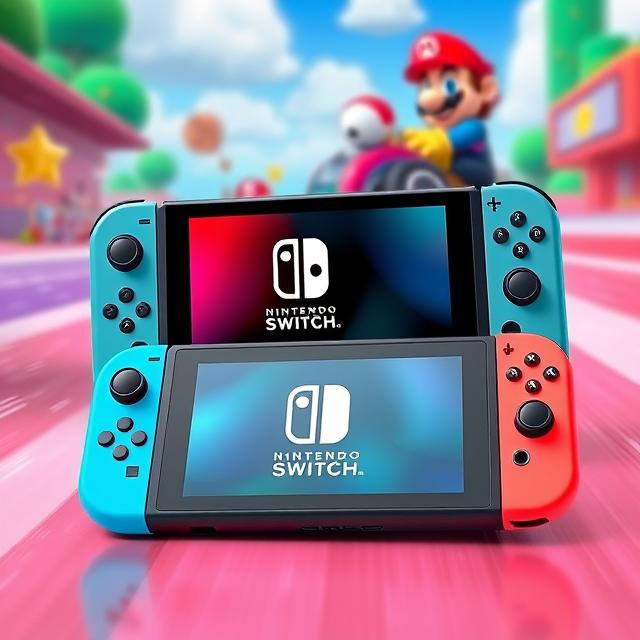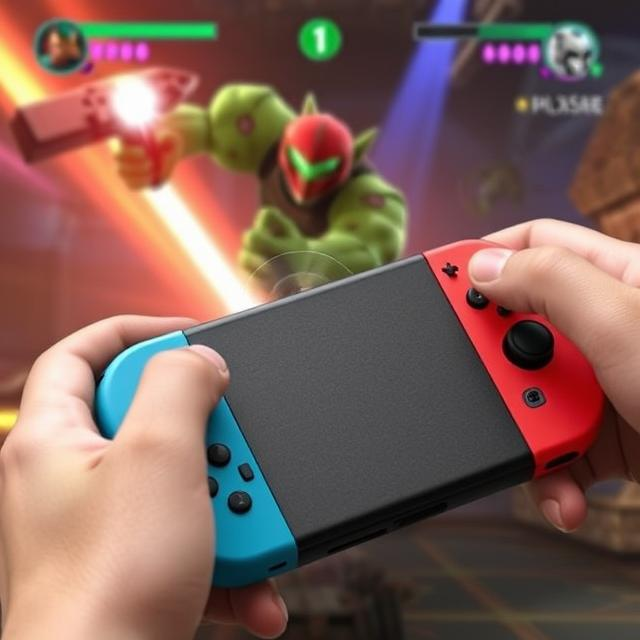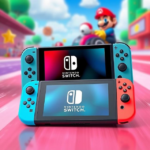
Nintendo’s Next-Gen Powerhouse: The Switch 2 Arrives
Nintendo is poised for a pivotal moment as it unveils the highly anticipated Nintendo Switch 2. Announced during a high-profile Nintendo Direct event in April 2025, this hybrid console aims to build on the staggering success of its predecessor, which boasts an active user base of 128 million and lifetime sales of 143 million units.
Slated for launch on June 5, 2025, the Switch 2 introduces a slate of hardware innovations that promise to elevate the gaming experience. At the heart of the console is a vibrant 7.9-inch LCD display with a 120Hz refresh rate and stunning 4K resolution when docked. The magnetically attached Joy-Con 2 controllers now offer mouse-like input support, while the console’s internal storage has been significantly expanded to 256GB – eight times the original Switch’s capacity.

Gamers can also look forward to enhanced power efficiency and integrated voice chat capabilities through the Nintendo Switch Online service. These features position the Switch 2 as a formidable contender in the evolving gaming landscape.
The launch lineup promises to captivate Nintendo’s loyal fanbase, with flagship titles such as the expansive 24-player Mario Kart World, featuring dynamic weather systems, and the highly anticipated Donkey Kong Bananza. Third-party support is also impressive, with the inclusion of blockbusters like Cyberpunk 2077, Street Fighter 6, and Hades 2.
However, the pricing strategy has sparked some controversy. The $79.99 price tag for Mario Kart World has drawn the ire of viewers during Nintendo’s Treehouse Live stream, with many demanding more affordable options. Additionally, the paid Welcome Tour tech demo, which won’t be bundled with the console, has also faced criticism.
Backward compatibility remains a key focus, as most original Switch games will remain playable on the new console. However, a new red-colored game cartridge will distinguish Switch 2 titles, and the Nintendo Switch Online service’s game vouchers won’t apply to exclusives.
Nintendo’s gaming empire remains formidable, with the original Switch accounting for over 90% of the company’s 2024 revenue. The Switch 2 aims to reverse recent financial declines, as annual revenue fell from $16 billion in 2021 to $11 billion in 2024, despite a growing headcount.
As the global gaming market continues to evolve, the Switch 2’s success could redefine Nintendo’s trajectory in an industry increasingly dominated by cross-platform titles and subscription services. With pre-orders beginning on April 8 through an invite-only initiative, all eyes will be on whether Nintendo’s loyal fanbase embraces the premium pricing or holds out for potential discounts – a critical test for the company’s next-gen strategy.
Nintendo’s Journey: From Playing Cards to Global Gaming Dominance
Humble Beginnings and Early Innovations (1889–1970s)
Nintendo’s story began humbly in 1889 as a playing card company in Kyoto, Japan. Over the decades, the company diversified into toys and electronic games, culminating in the release of the Color TV-Game (1977), its first foray into the home console market.
Milestones in Gaming History
1980: Game & Watch – Nintendo’s first handheld system introduced portable gaming with LCD screens and clock functionality, selling 43.4 million units worldwide.
1985: Nintendo Entertainment System (NES) – This console revived the gaming industry after the 1983 crash, selling over 60 million units. It also introduced Super Mario Bros., which revolutionized platformers with its precise controls and level design. The NES further pioneered cartridge-based games and the D-pad controller, setting industry standards.
1986: The Legend of Zelda – This open-world adventure game introduced non-linear storytelling and save functionality, becoming a blueprint for action-adventure titles.
1989: Game Boy – The portable console dominated handheld gaming, selling over 118 million units (including later models). Tetris bundled with the system became a cultural phenomenon.
1991: Super Nintendo Entertainment System (SNES) – The 16-bit console delivered enhanced graphics and sound, with classics like Super Mario World and The Legend of Zelda: A Link to the Past.
1996: Nintendo 64 – Nintendo’s first 3D console introduced the analog stick and iconic titles like Super Mario 64 and The Legend of Zelda: Ocarina of Time.
2004: Nintendo DS – The dual-screen handheld with touch controls sold 154.9 million units, becoming the best-selling console ever (Guinness World Records). Titles like Brain Age and Nintendogs appealed to non-traditional gamers.
2006: Wii – Motion-controlled gaming expanded Nintendo’s audience, with Wii Sports becoming a cultural staple. The console sold over 101 million units.
2017: Nintendo Switch – The hybrid console merged home and handheld gaming, selling over 132 million units by 2023. Its versatility and exclusives (Breath of the Wild, Animal Crossing) redefined player experiences.
Factors Behind Global Success
Cultural Neutrality: Games like Mario and Pokémon avoided regional biases, focusing on universal themes.
Hardware Innovation: From the D-pad (NES) to motion controls (Wii) and hybrid design (Switch), Nintendo prioritized unique gameplay over raw power.
Iconic Franchises: Mario, Zelda, and Pokémon became global phenomena, transcending gaming into movies, toys, and merchandise.
Legacy
Nintendo’s blend of nostalgia and innovation—from the NES’s revival of gaming to the Switch’s hybrid model—cements its status as a cultural icon. By balancing legacy IPs with bold hardware experiments, Nintendo continues to shape the industry while honoring its roots.




